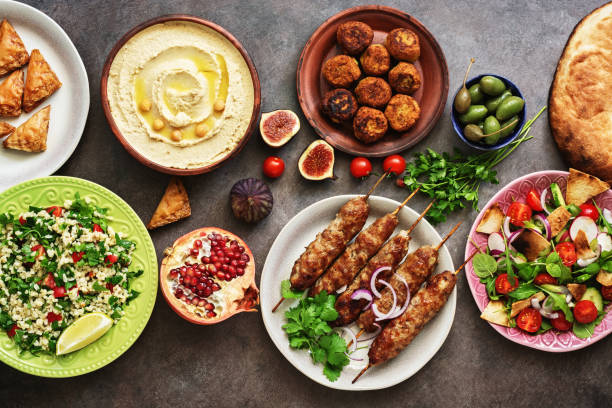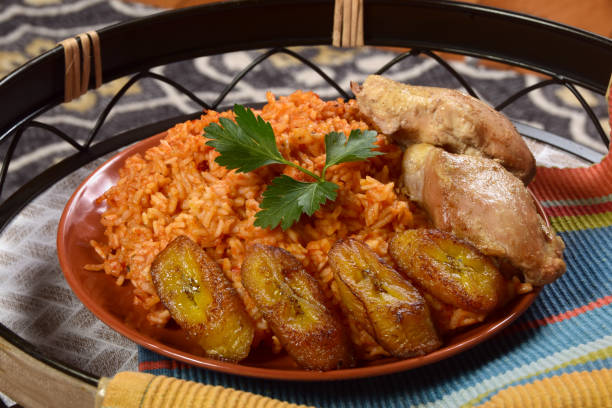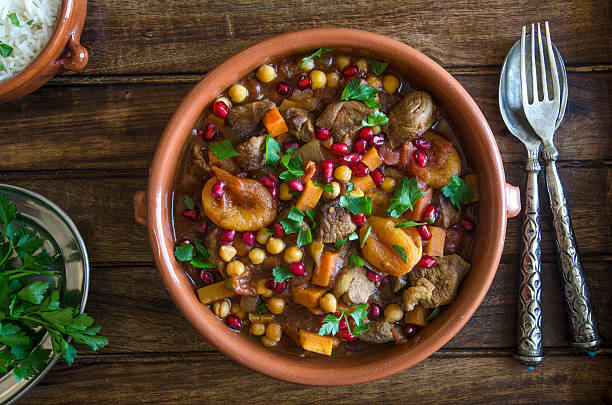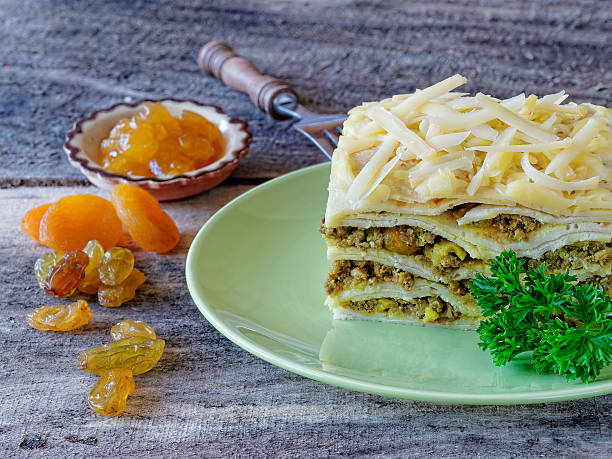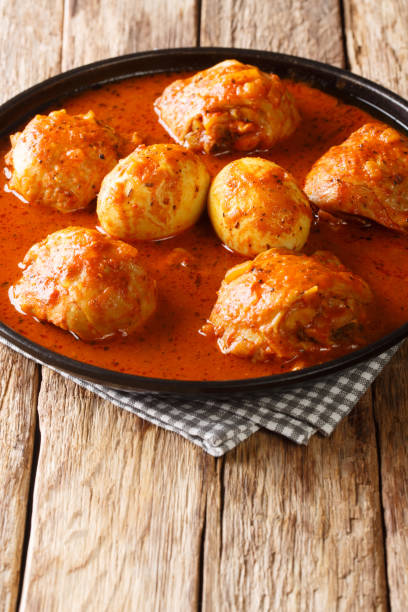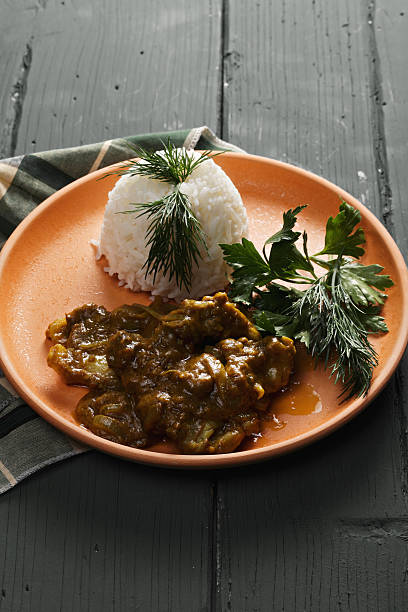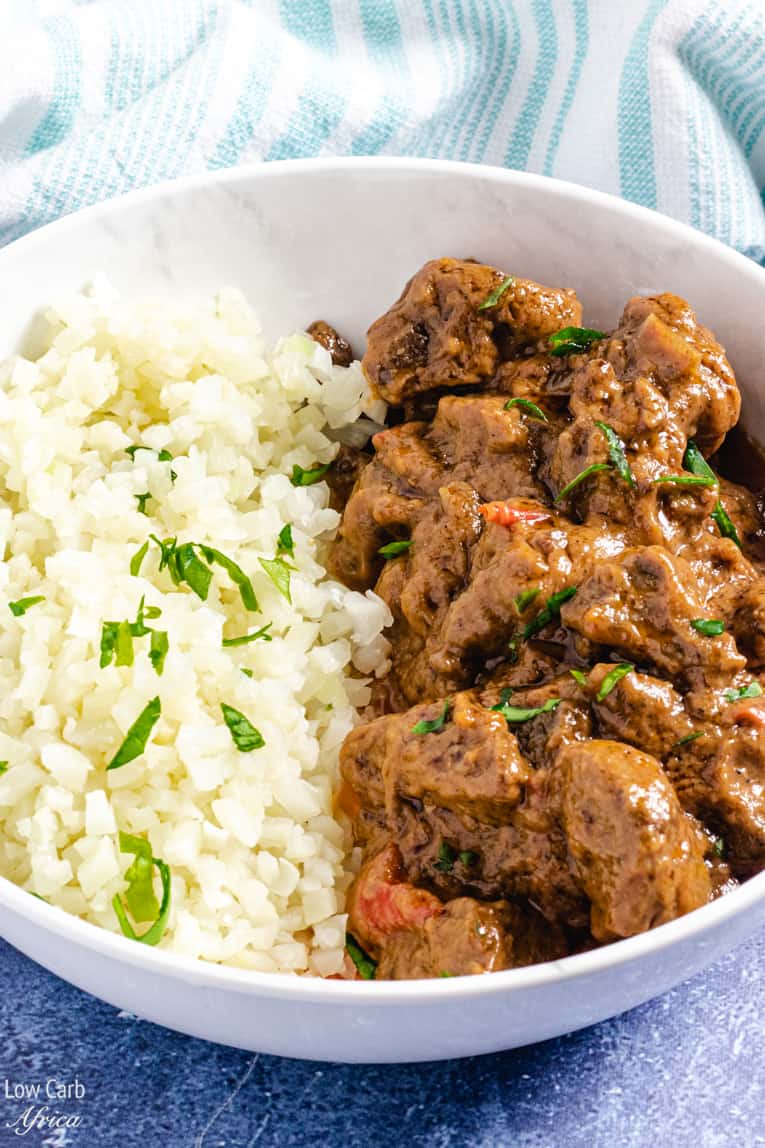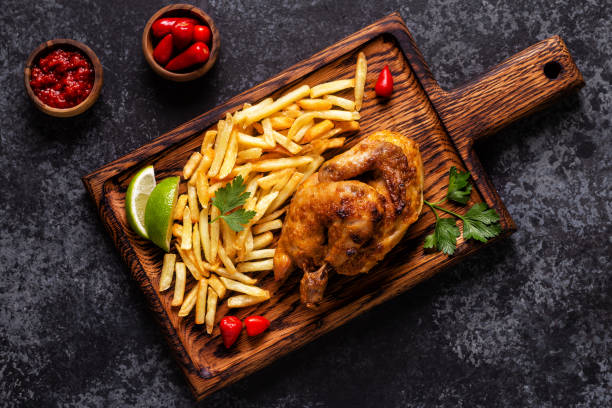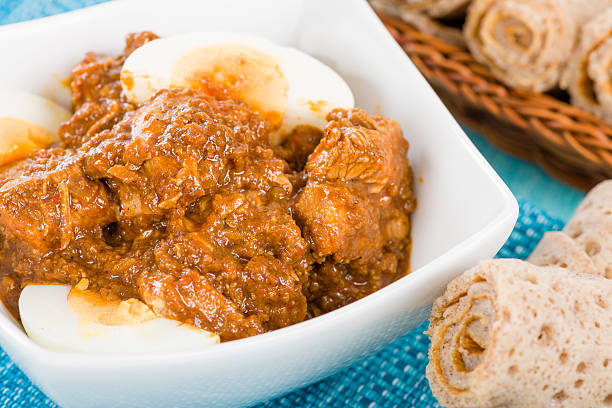Ten Authentic African Meals to Try
Africa is a continent rich in diverse cultures and culinary traditions. Its vibrant and flavorful cuisine showcases a wide range of ingredients, cooking techniques, and unique combinations of spices and herbs. In this blog, we will delve into the world of African cuisine and explore ten delicious and authentic African meals. From North Africa to West Africa, and from East Africa to Southern Africa, get ready to embark on a culinary journey like no other.
1. Jollof Rice (West Africa):
Ingredients:
- 2 cups long-grain rice
- 1 onion, finely chopped
- 2 tomatoes, blended
- 2 tablespoons tomato paste
- 1 bell pepper, finely chopped
- 2 cloves of garlic, minced
- 1 scotch bonnet pepper, whole (optional for heat)
- 1 teaspoon thyme
- 1 teaspoon curry powder
- 1 teaspoon paprika
- 1 teaspoon dried thyme
- 2 cups chicken or vegetable broth
- 2 tablespoons vegetable oil
- Salt and pepper to taste
Instructions:
1. Rinse the rice in cold water and set it aside.
2. In a large pot, heat the vegetable oil over medium heat.
3. Sauté the onions, bell pepper, and garlic until softened.
4. Add the blended tomatoes, tomato paste, scotch bonnet pepper, thyme, curry powder, paprika, dried thyme, salt, and pepper. Cook for about 5 minutes.
5. Stir in the rice and coat it evenly with the tomato mixture.
6. Pour in the chicken or vegetable broth and bring it to a boil.
7. Reduce the heat to low, cover the pot, and simmer for 20-25 minutes or until the rice is cooked and fluffy.
8. Remove the scotch bonnet pepper before serving.
B. Tips:
- For an extra kick of heat, leave the scotch bonnet pepper whole in the pot while cooking.
- Use long-grain rice for the best texture.
- Adjust the spices according to your preference.
C. Equipment:
- Large pot with a lid
- Wooden spoon
2. Tagine (North Africa):
A. Recipe:
Ingredients:
- 1.5 pounds chicken or lamb, cut into pieces
- 2 onions, finely chopped
- 3 cloves of garlic, minced
- 2 tomatoes, chopped
- 1 preserved lemon, chopped
- 1 cup green olives
- 1 tablespoon ground cumin
- 1 tablespoon ground coriander
- 1 tablespoon paprika
- 1 teaspoon ground ginger
- ½ teaspoon saffron threads
- ¼ cup chopped fresh cilantro
- ¼ cup chopped fresh parsley
- Salt and pepper to taste
- Olive oil
Instructions:
1. In a tagine or a large, deep skillet, heat olive oil over medium heat.
2. Sauté the onions and garlic until translucent.
3. Add the chicken or lamb pieces and brown them on all sides.
4. Stir in the tomatoes, preserved lemon, olives, cumin, coriander, paprika, ginger, saffron threads, salt, and pepper.
5. Pour enough water to cover the ingredients, reduce the heat to low, cover the tagine, and simmer for about 1-
2 hours until the meat is tender and the flavors are well infused.
6. Sprinkle fresh cilantro and parsley over the tagine before serving.
B. Tips:
- Preserved lemons are a key ingredient in tagine recipes. If you can't find them, you can make your own by pickling lemons in salt and lemon juice for a few weeks.
- The slow cooking process enhances the flavors, so be patient.
- Serve the tagine with couscous or bread to soak up the delicious sauce.
C. Equipment:
- Tagine (or a large, deep skillet)
- Wooden spoon
3. Bobotie (South Africa):
A. Recipe:
Ingredients:
- 2 pounds ground beef
- 1 onion, finely chopped
- 2 cloves of garlic, minced
- 1 slice of bread, soaked in milk
- 2 tablespoons curry powder
- 1 tablespoon apricot jam
- 1 tablespoon lemon juice
- 1 tablespoon chutney
- 1 tablespoon Worcestershire sauce
- 1 teaspoon ground turmeric
- ½ cup raisins
- ½ cup slivered almonds
- 2 eggs
- 1 cup milk
- Salt and pepper to taste
- Olive oil
Instructions:
1. Preheat the oven to 350°F (180°C).
2. In a large skillet, heat olive oil over medium heat.
3. Sauté the onions and garlic until softened.
4. Add the ground beef and cook until browned. Drain any excess fat.
5. Squeeze the excess milk from the soaked bread and add it to the skillet.
6. Stir in the curry powder, apricot jam, lemon juice, chutney, Worcestershire sauce, turmeric, raisins, and slivered almonds. Mix well.
7. Season with salt and pepper to taste.
8. Transfer the mixture to a greased baking dish and spread it evenly.
9. In a separate bowl, beat the eggs and milk together. Pour the mixture over the meat mixture in the baking dish.
10. Bake for 30-40 minutes or until the top is golden brown and set.
11. Let it cool slightly before serving.
B. Tips:
- Bobotie is traditionally served with yellow rice, chutney, and sliced banana.
- The mixture can be prepared in advance and refrigerated until ready to bake.
- Experiment with different spices and adjust the flavors to suit your taste.
C. Equipment:
- Large skillet
- Baking dish
4. Doro Wat (Ethiopia):
A. Recipe:
Ingredients:
- 2 pounds chicken, cut into pieces
- 2 onions, finely chopped
- 4 cloves of garlic, minced
- 1 tablespoon grated fresh ginger
- 2 tablespoons berbere spice blend
- 1 tablespoon paprika
- 1 teaspoon ground cumin
- 1 teaspoon ground coriander
- ½ teaspoon ground turmeric
- ¼ teaspoon ground cinnamon
- ¼ cup vegetable oil
- 2 cups chicken broth
- 2 tablespoons tomato paste
- Salt to taste
Instructions:
1. In a large pot, heat the vegetable oil over medium heat.
2. Sauté the onions until golden brown.
3. Add the garlic and ginger, and cook for an additional minute.
4. Stir in the berbere spice blend, paprika, cumin, coriander, turmeric, and cinnamon. Cook for a couple of minutes to release the flavors.
5. Add the chicken pieces to the pot and coat them well with the spice mixture.
6. Pour in the chicken broth and tomato paste. Stir to combine.
7. Bring the mixture to a boil, then reduce the heat to low, cover the pot, and simmer for about 45 minutes to 1 hour until the chicken is tender and the flavors are well developed.
8. Season with salt to taste.
9. Serve the Doro Wat with injera (Ethiopian flatbread) or rice.
B. Tips:
- Berbere spice blend is a key ingredient in Ethiopian cuisine. You can find it in specialty stores or make your own by combining various spices like chili peppers, paprika, ginger, and more.
- Adjust the spice level to your preference by adding more or less berbere spice.
- Traditionally, Doro Wat is made with chicken, but you can also use beef or lamb.
C. Equipment:
- Large pot with a lid
5. Bunny Chow (South Africa):
A. Recipe:
Ingredients:
- 1 pound boneless chicken, lamb, or beef, cut into cubes
- 2 tablespoons vegetable oil
- 1 onion, finely chopped
- 2 cloves of garlic, minced
- 1 tablespoon curry powder
- 1 teaspoon ground cumin
- 1 teaspoon ground coriander
- 1 teaspoon paprika
- 1 teaspoon turmeric
- 1 cup chicken or beef broth
- 1 cup chopped tomatoes
- 2 tablespoons tomato paste
- 2-3 small loaves of bread (preferably white bread)
- Salt and pepper to taste
- Fresh cilantro or parsley, for garnish
Instructions:
1. In a large skillet, heat the vegetable oil over medium heat.
2. Sauté the onion and garlic until softened.
3. Add the chicken, lamb, or beef cubes to the skillet and cook until browned.
4. Stir in the curry powder, cumin, coriander, paprika, and turmeric. Cook for a few minutes to toast the spices and release their flavors.
5. Pour in the chicken or beef broth, chopped tomatoes, and tomato paste. Stir to combine.
6. Bring the mixture to a boil, then reduce the heat to low and simmer for 30-40 minutes until the meat is tender and the sauce has thickened.
7. Season with salt and pepper to taste.
8. Cut a portion from the top of each bread loaf to create a hollow cavity.
9. Spoon the meat mixture into the bread loaves, filling them generously.
10. Garnish with fresh cilantro or parsley.
11. Serve the Bunny Chow while hot.
B. Tips:
- Bunny Chow is traditionally made with white bread, but you can use whole wheat bread or even rolls.
- Adjust the spice levels according to your taste preferences.
- Feel free to add vegetables like peas or diced potatoes to the meat mixture for added texture and flavor.
C. Equipment:
- Large skillet
6. Ndolé (Cameroon):
A. Recipe:
Ingredients:
- 2 pounds beef, chicken, or fish, cut into pieces
- 1 bunch fresh bitterleaf or substitute with spinach or kale
- 2 cups fresh shrimp, peeled and deveined (optional)
-
1 onion, finely chopped
- 2 cloves of garlic, minced
- 2 tablespoons palm oil
- 2 tablespoons ground crayfish (substitute with ground dried shrimp)
- 1 tablespoon peanut butter
- 1 tablespoon ground egusi (melon) seeds
- 1 tablespoon ground ndolé seeds (bitterleaf seeds) or substitute with ground pumpkin seeds
- 1 teaspoon ground pepper
- 1 cup beef or chicken broth
- Salt to taste
Instructions:
1. In a large pot, bring water to a boil and blanch the bitterleaf for 5-7 minutes to remove some of the bitterness. Drain and set aside.
2. In the same pot, heat the palm oil over medium heat.
3. Sauté the onion and garlic until softened.
4. Add the beef, chicken, or fish pieces to the pot and cook until browned.
5. Stir in the ground crayfish, peanut butter, ground egusi seeds, ground ndolé seeds, and ground pepper. Mix well.
6. Pour in the beef or chicken broth and bring the mixture to a boil.
7. Reduce the heat to low, cover the pot, and simmer for about 1-2 hours until the meat is tender and the flavors are well incorporated.
8. Add the blanched bitterleaf and shrimp (if using). Cook for an additional 5-7 minutes until the shrimp is cooked through.
9. Season with salt to taste.
10. Serve the Ndolé with steamed rice or foofoo (a staple food made from cassava, yam, or plantain).
B. Tips:
- Bitterleaf is a key ingredient in Ndolé, but it can be quite bitter. Blanching helps reduce the bitterness.
- If fresh bitterleaf is not available, you can use spinach or kale as a substitute.
- Experiment with different meats or seafood to create variations of Ndolé.
C. Equipment:
- Large pot
7. Bobotok (Madagascar):
A. Recipe:
Ingredients:
- 2 pounds ground beef or pork
- 1 onion, finely chopped
- 2 cloves of garlic, minced
- 2 tomatoes, chopped
- 2 tablespoons fresh ginger, grated
- 2 tablespoons soy sauce
- 2 tablespoons oyster sauce
- 2 tablespoons sweet chili sauce
- 1 teaspoon ground turmeric
- ½ teaspoon ground cloves
- ½ teaspoon ground cinnamon
- ½ teaspoon ground nutmeg
- Salt and pepper to taste
- Banana leaves or foil for wrapping
Instructions:
1. Preheat the oven to 350°F (180°C).
2. In a large skillet, cook the ground beef or pork over medium heat until browned. Drain any excess fat.
3. Add the onion and garlic to the skillet and cook until softened.
4. Stir in the tomatoes, grated ginger, soy sauce, oyster sauce, sweet chili sauce, turmeric, cloves, cinnamon, nutmeg, salt, and pepper. Mix well.
5. Cook the mixture for a few minutes to allow the flavors to meld.
6. Remove the skillet from heat and let the mixture cool slightly.
7. Take a portion of the meat mixture and place it in the center of a banana leaf or foil.
8. Fold the leaf or foil to create a neat parcel, securing the edges.
9. Repeat the process with the remaining meat mixture.
10. Place the parcels on a baking sheet and bake for 30-40 minutes until the meat is cooked through.
11. Serve the Bobotok while hot, either by unwrapping the parcels or presenting them as is.
B. Tips:
- Banana leaves add a unique flavor and aroma to the Bobotok, but if they are not available, you can use foil as a substitute.
- Adjust the seasoning and spices according to your taste preferences.
- Bobotok can be enjoyed as a main dish or as an appetizer.
C. Equipment:
- Large skillet
- Baking sheet
8. Maafe (West Africa):
A. Recipe:
Ingredients:
- 2 pounds chicken or beef, cut into pieces
- 1 onion, finely chopped
- 2 cloves of garlic, minced
- 2 tablespoons peanut oil
- 1 cup peanut butter
- 2 tomatoes, chopped
- 2 carrots, sliced
- 2 potatoes, peeled and cubed
- 1 eggplant, cubed
- 1 bell pepper, chopped
- 1 scotch bonnet pepper, whole (optional for heat)
- 2 cups vegetable or chicken broth
- 1 teaspoon ground cumin
- 1 teaspoon ground coriander
- 1 teaspoon paprika
- 1 teaspoon dried thyme
- Salt and pepper to taste
Instructions:
1. In a large pot, heat the peanut oil over medium heat.
2. Sauté the onion and garlic until softened.
3. Add the chicken or beef pieces to the pot and brown them on all sides.
4. Stir in the peanut butter, chopped tomatoes, carrots, potatoes, eggplant, bell pepper, scotch bonnet pepper, cumin, coriander, paprika, dried thyme, salt, and pepper.
5. Pour in the vegetable or chicken broth and bring the mixture to a boil.
6. Reduce the heat to low, cover the pot, and simmer for about 1-2 hours until the meat is tender and the flavors have melded together.
7. Remove the scotch bonnet pepper before serving.
8. Serve the Maafe with rice or fufu (a starchy dough made from cassava, yam, or plantain).
B. Tips:
- Adjust the thickness of the Maafe by adding more or less peanut butter.
- For a vegetarian version, omit the meat and use a variety of vegetables and tofu.
- Garnish the Maafe with chopped peanuts or fresh cilantro for added texture and flavor.
C. Equipment:
- Large pot with a lid
9. Piri Piri Chicken (Mozambique):
A. Recipe:
Ingredients:
- 4-6 chicken pieces (legs, thighs, or a whole chicken, cut into pieces)
- 2 tablespoons olive oil
- 2 tablespoons lemon juice
- 2 tablespoons piri piri sauce or substitute with hot sauce
- 4 cloves of garlic, minced
- 1 teaspoon paprika
- 1 teaspoon dried oregano
- 1 teaspoon dried thyme
- 1 teaspoon ground cumin
- Salt and pepper to taste
Instructions:
1. In a bowl, combine the olive oil, lemon juice, piri piri sauce, minced garlic, paprika, dried oregano, dried thyme, ground cumin, salt, and
pepper.
2. Place the chicken pieces in a ziplock bag or a shallow dish and pour the marinade over the chicken. Make sure the chicken is coated well.
3. Marinate the chicken in the refrigerator for at least 2 hours or overnight for maximum flavor.
4. Preheat the grill or oven to medium-high heat.
5. Remove the chicken from the marinade and shake off any excess.
6. Grill the chicken for 5-7 minutes per side or until cooked through and the juices run clear. Alternatively, you can roast the chicken in the oven at 400°F (200°C) for 25-30 minutes.
7. Serve the Piri Piri Chicken hot with a side of vegetables or salad.
B. Tips:
- Piri piri sauce is a fiery chili sauce commonly used in African cuisine. Adjust the amount of sauce according to your spice tolerance.
- If you don't have access to piri piri sauce, you can use any hot sauce of your choice.
- Serve the Piri Piri Chicken with a squeeze of fresh lemon juice for added tanginess.
C. Equipment:
- Grill or oven
Certainly! Here's one more popular African meal for you:
11. Injera with Doro Wat (Ethiopia):
A. Recipe:
Ingredients for Injera:
- 2 cups teff flour (or substitute with a mixture of 1 cup all-purpose flour and 1 cup whole wheat flour)
- 3 cups water
- ½ teaspoon active dry yeast
- Salt to taste
Ingredients for Doro Wat (Spicy Chicken Stew):
- 2 pounds chicken drumsticks or thighs
- 2 tablespoons clarified butter or vegetable oil
- 2 onions, finely chopped
- 4 cloves of garlic, minced
- 2 tablespoons berbere spice blend (a mixture of chili peppers, ginger, garlic, and various spices)
- 2 tablespoons tomato paste
- 2 cups chicken broth
- 4 hard-boiled eggs, peeled
- Salt to taste
Instructions for Injera:
1. In a large bowl, mix the teff flour, water, yeast, and salt until well combined. Cover the bowl with a clean cloth and let it sit at room temperature for 24-48 hours to ferment.
2. Heat a non-stick skillet or a large griddle over medium heat. Ladle about 1/4 cup of the fermented batter onto the skillet and spread it into a thin, circular shape. Cook until bubbles form on the surface and the edges start to lift.
3. Remove the injera from the skillet and repeat the process with the remaining batter.
Instructions for Doro Wat:
1. In a large pot, heat the clarified butter or vegetable oil over medium heat.
2. Add the chopped onions and sauté until softened and golden brown.
3. Stir in the minced garlic and berbere spice blend. Cook for a minute to release the flavors.
4. Add the tomato paste and cook for another minute, stirring continuously.
5. Place the chicken pieces in the pot and coat them well with the spice mixture.
6. Pour in the chicken broth, cover the pot, and simmer for about 45 minutes to an hour, until the chicken is tender and cooked through.
7. Add the hard-boiled eggs to the stew and cook for an additional 5-10 minutes.
8. Season with salt to taste.
B. Tips:
- Injera is a sourdough flatbread with a slightly tangy flavor. Fermentation is key to achieve the traditional taste. If you can't find teff flour, a mixture of all-purpose flour and whole wheat flour can be used as a substitute.
- Berbere spice blend is a crucial ingredient in Ethiopian cuisine. It can be spicy, so adjust the amount according to your preference.
- Doro Wat is traditionally served with injera. Tear off a piece of injera, use it to scoop up the stew, and enjoy the combination of flavors.
C. Equipment:
- Large bowl
- Non-stick skillet or griddle
- Large pot with a lid
Enjoy the authentic flavors of Ethiopia with this classic combination of Injera and Doro Wat. The tangy injera pairs perfectly with the rich and spicy chicken stew, creating a delicious and satisfying meal.
These are just a few examples of delicious African meals with their recipes, tips, and equipment suggestions. African cuisine is diverse and offers a wide range of flavors and ingredients to explore. Whether you're a fan of spicy dishes, hearty stews, or aromatic rice dishes, African cuisine has something for everyone. So, grab your ingredients, get cooking, and enjoy the rich and vibrant flavors of African meals!
